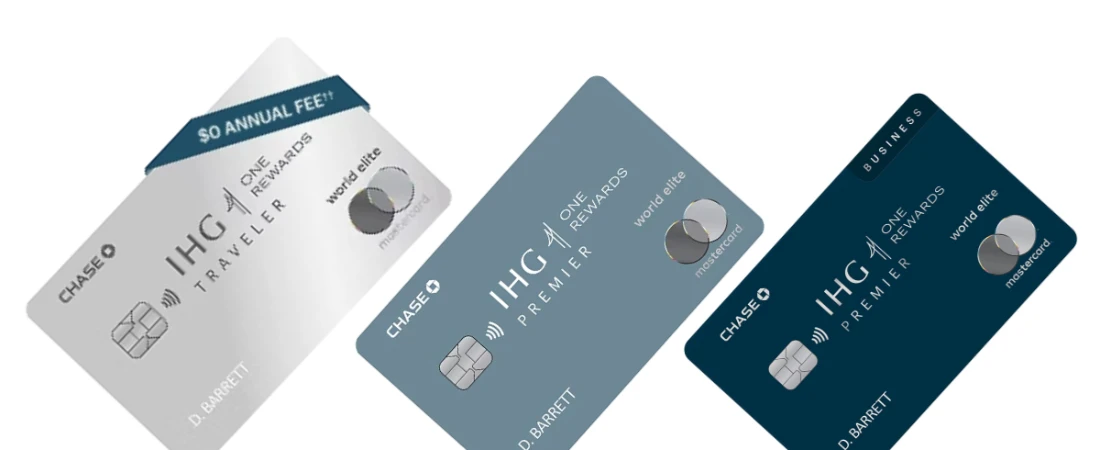
Hotel loyalty programs have transformed significantly over the last few years, and at the heart of these changes lies a powerful yet controversial shift: dynamic pricing in hotel rewards. Instead of static award charts that assign a fixed number of points to each property or night, many major hotel chains now use variable point pricing based on real-time demand, cash rates, and availability.
Unlike airfare, where dynamic pricing has long been standard, hotel loyalty programs traditionally offered award stays at predictable rates. This allowed travelers to plan and save points knowing what redemptions would cost. Now, with dynamic pricing, that certainty is gone. A night that used to cost 20,000 points could now fluctuate from 12,000 to 40,000+ points, even at the same property, depending on timing and demand.
This shift is not merely theoretical. Marriott Bonvoy, Hilton Honors, IHG One Rewards, and Choice Privileges have all implemented some form of dynamic pricing. Even programs like World of Hyatt, once known for its reliable award chart, have started experimenting with flexible pricing in select properties or high-demand dates.
Supporters argue that dynamic pricing increases flexibility and aligns point redemptions more closely with market value. Critics claim it devalues points, introduces uncertainty, and penalizes loyal customers.
This blog will examine the facts: How does dynamic pricing actually work in different hotel reward programs? What are the pros and cons for travelers? And most importantly, how can you adapt your strategy to maximize value in this new landscape?
With data-driven insights, real-world examples, and actionable advice, we’ll help you understand dynamic pricing in hotel rewards—and use it to your advantage.
Not all dynamic pricing models are created equal. Let's break down how some of the most popular hotel loyalty programs have implemented dynamic pricing in practice.
In March 2022, Marriott eliminated its award chart and moved to fully dynamic pricing. Point requirements now reflect real-time cash rates, though not on a strict 1:1 basis. For example, a room that costs $200 might require anywhere from 20,000 to 50,000 points depending on demand and time of booking.
Real Example:
The Marriott Marquis in New York City previously cost 50,000 points per night under the old system. Now, during peak season, it can go as high as 90,000 points.
Marriott states there's “no maximum” on point pricing, which removes predictability. Off-peak redemptions can offer better value, but last-minute or holiday bookings are usually more expensive in points.
Hilton was an early adopter of dynamic pricing. There’s no fixed award chart, and prices vary widely. The good news: Hilton allows you to book a night with as few as 5,000 points in low-cost regions. The downside? Premium properties during busy seasons often exceed 100,000 points per night.
Real Example:
The Waldorf Astoria Maldives ranges from 120,000 to 150,000+ points per night—making it harder to plan aspirational redemptions without flexibility or a massive point balance.
Hilton’s dynamic pricing is closely tied to cash prices, often at a value of 0.4 to 0.6 cents per point.
In 2020, IHG introduced flexible pricing with variable award rates. In 2022, it doubled down, removing award charts altogether.
A $100 night might cost 17,000 points, while a $300 night could exceed 60,000 points. Value hovers around 0.5 to 0.6 cents per point.
Real Example:
The InterContinental London Park Lane varies between 55,000 to over 100,000 points depending on the season and demand.
While Hyatt still uses award charts, it added peak and off-peak pricing in 2022. Each hotel falls into a category, and pricing adjusts within a range.
Example:
A Category 4 hotel costs:
12,000 (off-peak)
15,000 (standard)
18,000 (peak)
This is more predictable than fully dynamic models and is still favored by savvy travelers.
Each program approaches dynamic pricing differently. Some have kept a semi-predictable structure (Hyatt), while others (Marriott, Hilton) have embraced full flexibility. Understanding how each model works is crucial to making smart redemptions.

Dynamic pricing significantly affects point valuations—a critical aspect of loyalty programs. When prices fluctuate, the value per point (VPP) becomes inconsistent, often reducing the overall worth of points.
Let’s look at average point values based on current dynamic pricing structures:
| Program | Avg. Point Value (cents) |
|---|---|
| Hyatt | 1.5 – 2.0 |
| Marriott | 0.6 – 0.8 |
| Hilton | 0.4 – 0.6 |
| IHG | 0.5 – 0.6 |
These are just averages. You can still get outsized value, but it’s harder to find.
With dynamic pricing, hotels often peg point costs too closely to cash rates, even during discounts or promotions.
For example, a $100 room at a Hilton might require 25,000 points. That’s just 0.4 cents per point—a poor value compared to redeeming during off-peak periods or saving for luxury properties.
Here are key strategies to adapt your redemptions in the dynamic environment:
Book in advance: Award rates often increase closer to the check-in date.
Look for off-peak stays: Mid-week or shoulder season stays offer lower point prices.
Use flexible calendars: Most programs now show a month view of point prices. Use this to find the lowest redemption rates.
Track point sales: Buying points when discounted (e.g., Hilton’s 100% bonus promotions) can offer better value if you redeem them at high-end properties.
Dynamic pricing also enables occasional value spikes:
IHG sometimes offers PointBreaks promotions with steeply discounted redemptions.
Hilton offers “5th night free” for elites—essentially averaging down the cost per night.
Before dynamic pricing, award travel had “sweet spots” like:
Hyatt’s Category 1 properties at 5,000 points
Marriott’s Category 5 at 35,000 points
Hilton’s “standard” award nights
Now, these are moving targets.
Dynamic pricing reduces predictability and often devalues points, but with smart planning and timing, travelers can still find opportunities for strong redemptions.

To understand dynamic pricing's real-world implications, let’s examine specific hotels and compare point costs at different times.
Standard Rate (Midweek, Off-Season): 42,000 points
Peak Weekend Rate (Summer): 85,000 points
Cash Price Range: $240 – $480
Point Value Fluctuation:
Low Season: ~0.57 cents/point
High Season: ~0.56 cents/point
Conclusion: Point value is relatively stable, but required points nearly double.
Low Season: 10,000 points
High Season: 28,000 points
Cash Rates: $40 – $100
Point Value:
Low Season: 0.4 cents/point
High Season: 0.35 cents/point
Conclusion: Despite being dynamic, redemption value remains low overall.
Off-Peak: 21,000 points
Standard: 25,000 points
Peak: 29,000 points
Cash Rates: $500 – $700
Point Value:
Off-Peak: ~2.3 cents/point
Peak: ~1.7 cents/point
Conclusion: Hyatt still offers strong value, even with dynamic pricing adjustments.
Low Season: 55,000 points
High Season: 100,000+ points
Cash Rates: $600+
Point Value:
Low: ~1.1 cents/point
High: ~0.6 cents/point
Conclusion: Redemption value drops as prices rise, reinforcing the need for early booking.
Timing is critical: Same property can cost double in points from one date to another.
Peak travel = poor value: Booking during holidays or weekends typically yields lower point value.
Premium properties = exceptions: High-end redemptions (e.g., Hyatt’s Andaz) may still deliver excellent value.
Dynamic pricing introduces variability, but not randomness. Analyzing date ranges, cash equivalents, and loyalty promotions can still result in smart redemptions.

In a world of dynamic pricing, the key to success is flexibility, awareness, and smarter decision-making. Here are actionable strategies to help you stay ahead.
Several online tools can help compare point value:
Award Hacker: Estimate best value for points.
Point.me (for flights but expanding): Shows real-time redemption options.
Hotel chains' flexible date search tools: Now essential to locate low-point nights.
Programs like Hilton and Marriott offer value-enhancing perks:
5th night free on award stays (Hilton, Marriott)
Free breakfast and upgrades (elite-only)
Late checkout and lounge access
Using perks during redemptions can tip the scales even if point value seems low.
Some programs allow mixing cash and points, providing flexibility if you’re short on points. These options often offer better-than-average value, especially in low-demand periods.
Occasionally, buying points during a promotion can be cheaper than paying the cash rate. Just ensure you:
Use them promptly (to avoid devaluation)
Calculate value per point before buying
Target aspirational properties
Dynamic pricing means programs can change overnight. Sign up for:
Email alerts
Loyalty blogs like One Mile at a Time or View From The Wing
Reddit forums like r/awardtravel
If your dates are rigid, you’ll often pay more. Adjusting your trip by even one day can dramatically change point requirements.
Example:
Marriott’s St. Regis Aspen may cost 120,000 points on Saturday but only 80,000 on Sunday.
Hotel chains rarely announce devaluations transparently. By tracking point values over time, you can anticipate trends and burn points strategically.
Adapting to dynamic pricing requires a tactical shift in how travelers think about points. With flexible dates, the right tools, and an eye on value, dynamic pricing can be navigated effectively.

Dynamic pricing in hotel rewards has fundamentally changed how travelers approach point redemptions. While some see it as a negative shift—introducing unpredictability and devaluing points—others recognize that it opens up new possibilities and pricing flexibility.
Yes, you may no longer find flat-rate redemptions for aspirational properties or predictable off-season values. But by understanding how each loyalty program implements dynamic pricing, you can still uncover redemptions that deliver excellent point value.
Hyatt remains the most consistent program for value, while Hilton and Marriott offer extensive global footprints with variable—but still manageable—pricing. IHG’s frequent promotions can present strategic opportunities, particularly when paired with point purchases or flexible bookings.
The key is to treat your points like a currency—one that fluctuates in value. Just as you wouldn’t spend $500 on something worth $200, don’t burn 100,000 points on a night that offers weak value. Instead, study trends, use smart tools, book in advance, and, most importantly, remain flexible.
Dynamic pricing isn’t going away. In fact, it’s likely to become more sophisticated and widespread. The good news is: With a data-driven approach and strategic mindset, you can thrive in this new environment—and get more from your hotel rewards than ever before.
Lina Zhou is a globe-trotting travel writer from Chengdu, China. With a passion for hidden gems and cross-cultural experiences, she shares practical tips, visa guidance, and immersive stories from every corner of the world. When not exploring, she’s sipping tea while planning her next adventure.